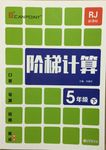题目内容
Sometimes we need to remind ourselves that thankfulness is indeed a virtue (美德).
William Bennett
Thanksgiving Day was coming. The first grade teacher gave her class a fun assignment (作业) — to draw a picture of for which they were thankful.
Most of the class might be considered poor, but still many would the holiday with turkey and other traditional food of the season. These, the teacher thought, would be the subject of most of her students’ art. And they were.
But Douglas made a(an) kind of picture. Douglas was a different kind of boy. He was the teacher’s true child of weak and unhappy. As other children played at , Douglas used to stand close by her side. One could only guess at the pain that Douglas felt behind those sad .
Yes, his picture was different. When he was asked to draw a picture of something for which he was thankful, he drew a . Nothing else. Just an empty hand.
His abstract (抽象的) picture caught the of his classmates. Whose hand could it be? One child guessed it was the hand of a farmer, because farmers turkeys. Another suggested a police officer, because the police protect and people. Still others guessed it was the hand of God, for God feeds us. And so the discussion went on — until the teacher almost forgot the young artist .
When the children had gone on to other assignments, she stopped at Douglas’ desk, bent down, and him whose hand it was. The little boy looked away and murmured, “It’s yours, teacher.”
She recalled the when she had taken his hand and walked with him here or there, as she had the other students. How she had said, “Take my hand, Douglas, we’ll go outside.” Or, “Let me show you how to hold your pencil.” Or, “Let’s do this together.” Douglas was very for his teacher’s hand. Brushing aside a tear, she went on with her work.
The story speaks of more than thankfulness. It says something about teachers teaching and parents parenting and friends showing friendship, and how much it means to the Douglases of the world. They might not always say thanks, but they’ll remember the hand that out.
William Bennett
Thanksgiving Day was coming. The first grade teacher gave her class a fun assignment (作业) — to draw a picture of for which they were thankful.
Most of the class might be considered poor, but still many would the holiday with turkey and other traditional food of the season. These, the teacher thought, would be the subject of most of her students’ art. And they were.
But Douglas made a(an) kind of picture. Douglas was a different kind of boy. He was the teacher’s true child of weak and unhappy. As other children played at , Douglas used to stand close by her side. One could only guess at the pain that Douglas felt behind those sad .
Yes, his picture was different. When he was asked to draw a picture of something for which he was thankful, he drew a . Nothing else. Just an empty hand.
His abstract (抽象的) picture caught the of his classmates. Whose hand could it be? One child guessed it was the hand of a farmer, because farmers turkeys. Another suggested a police officer, because the police protect and people. Still others guessed it was the hand of God, for God feeds us. And so the discussion went on — until the teacher almost forgot the young artist .
When the children had gone on to other assignments, she stopped at Douglas’ desk, bent down, and him whose hand it was. The little boy looked away and murmured, “It’s yours, teacher.”
She recalled the when she had taken his hand and walked with him here or there, as she had the other students. How she had said, “Take my hand, Douglas, we’ll go outside.” Or, “Let me show you how to hold your pencil.” Or, “Let’s do this together.” Douglas was very for his teacher’s hand. Brushing aside a tear, she went on with her work.
The story speaks of more than thankfulness. It says something about teachers teaching and parents parenting and friends showing friendship, and how much it means to the Douglases of the world. They might not always say thanks, but they’ll remember the hand that out.
| 小题1: |
|
| 小题2: |
|
| 小题3: |
|
| 小题4: |
|
| 小题5: |
|
| 小题6: |
|
| 小题7: |
|
| 小题8: |
|
| 小题9: |
|
| 小题10: |
|
| 小题11: |
|
| 小题12: |
|
| 小题13: |
|
| 小题14: |
|
| 小题15: |
|
小题1:B
小题2:C
小题3:D
小题4:B
小题5:D
小题6:C
小题7:D
小题8:A
小题9:B
小题10:A
小题11:B
小题12:D
小题13:B
小题14:A
小题15:C
试题分析:这篇短文讲述一个特别的小男孩在感恩节对老师特别的感谢。老师在感恩节让同学们画一幅想要感谢的事物的画,小男孩画得是老师的一只手。这只手带给他无限的温暖和帮助,小男孩用这样特别的方式表达对老师的感谢。
小题1:考查不定代词及语境的理解。句意:一年级的老师给他的学生们留了一个有趣的作业,让他们画一幅自己想要感谢的事物的图画。根据第四段第一行When he was asked to draw a picture of something for which he was thankful,可知答案为B。
小题2:考查动词及语境的理解。句意:大多数同学都觉得这样很没趣,但是还是有许多人吃火鸡和这个季节其他的传统食物来庆祝这个节日。A. congratulate“祝贺”;B. spend“度过,花费”;C. celebrate“庆祝”;D. consider“考虑”。结合语境,故选C。
小题3:考查形容词及语境的理解。句意:但是Douglas 制作了一幅不同的图画。A. good“好的”;B. interesting“有趣的”;C. exciting“令人兴奋的”;D. different“不同的”结合第四段第一行Yes, his picture was different.可知答案为D。
小题4:考查名词及语境的理解。句意:当其他的孩子在休息时玩耍的时候,Douglas紧紧的站在她的旁边。at rest“休息”,故选B。
小题5:考查名词及语境的理解。句意:一个能猜到Douglas在那双悲伤的眼睛背后的疼痛的人。A. noses“鼻子”;B. hands“手”;[C. faces“脸”;D. eyes“眼睛”。结合语境,故选D。
小题6:考查名词及语境的理解。句意:当他被要求画一幅想要感谢的事物的图画时,他画了一只手。根据后文Just an empty hand.可知答案为C。
小题7:考查名词及语境的理解。句意:他抽象的图画引起了其他同学的想象力。A. thought“想法”;B. description“描述”;C. respect“尊重”;[D. imagination“想象力”。根据后文同学们的猜测,可知此处应该选择D。
小题8:考查动词及语境的理解。句意:一个学生猜测是农民的手,因为农民饲养火鸡。A. raise“饲养”;B. need“需要”;C. buy“购买”;D. show“出示,显示”。结合语境,故选A。
小题9:考查动词短语及语境的理解。句意:另一名同学猜是警察的手,因为警察保护和照顾我们。A. look at“看”;B. care for“照顾”;C. take away“拿走”;D. drive off“驶去”。结合语境,故选B。
小题10:考查反身代词及语境的理解。句意:讨论持续进行着,直到老师几乎忘记小画家本身了。A. himself“他自己”;B. itself“它自己”;C. herself“她自己”;D. themselves“他们自己”。Douglas是小男孩,故选A。
小题11:考查动词及语境的理解。句意:当其他孩子都出去活动了,老师停在他的桌旁,弯下腰问他那是谁的手。A. said“说”;B. asked“问”;C. talked“讲话”;D. spoke“说”。 结合句意,故选B。
小题12:考查名词及语境的理解。句意:她回忆起无数次她牵着他的手到处走的时候。A. chances“机会”;B. forms“形式”;C. ways“方式”;D. times“数次”。结合语境,故选D。
小题13:考查形容词及语境的理解。句意:她说过多少次“Douglas,牵着我的手,我们去外边”。How much“多少钱,多少”修饰不可数名词;How many“多少”,How often“多久,多常”;How long“多长,多久”。结合语境,应该是多少次,故选B。
小题14:考查形容词及语境的理解。句意:Douglas非常感谢他老师的手。A. thankful“感谢的,感激的”;B. helpful“有帮助的”;C. careful“小心的”;D. beautiful“漂亮的”。结合语境,故选A。
小题15:考查动词及语境的理解。句意:他们不会总说感谢,他们会记得伸出援助的那双手。move out“搬出”;hold out“伸出,拿出”;reach out“伸出援助之手”;put out“出版”。结合语境,故选C。

练习册系列答案
 阶梯计算系列答案
阶梯计算系列答案
相关题目

 India
India
